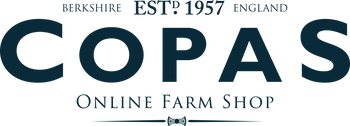Why Is Turkey Considered A Festive Dish?
Posted by The Turkey Team on 15th Apr 2022
It is thought that well over half of British households tuck into turkey on Christmas Day, with about 10 million roasting birds sold each festive season. Turkey is a meat that is uniquely associated with the yuletide celebrations, yet most of us never really question why. After all, it would be just as delicious to eat it as an Easter dinner!
Like a lot of things, the tradition can be traced back to the reign of Henry VIII. Good Housekeeping explains that it is widely accepted that the explorer William Strickland introduced turkeys to the UK from his travels in the Americas during the mid 1500s.
The birds certainly are native to the Americas, but who exactly first brought them to the UK seems to be open to interpretation, as the BBC explains. Strickland, who originated from East Yorkshire, was said to have imported six birds, acquired from Native Americans, and sold them at a market in Bristol in 1526.
Eventually, Strickland became a wealthy man, apparently through trading poultry, and built Boynton Hall, a stately home in East Yorkshire. A descendent of Strickland, Richard Marriott, still lives in the hall, and he has done some detective work to establish the truth about the source of the family fortune.
However, Mr Marriott told the BBC: "Unfortunately, there is no real proof that he was the original man who brought the turkey into England. He is reputed to have sailed with one of the Cabots out of Bristol, but unfortunately we cannot make the facts fit the story.”
He added: “I am sure there must be something there which links him more positively with the story of the turkey but it is very, very difficult to pin down a provable historical fact."
Whatever the exact truth of the matter, it is known that before the mid 1500s, goose, boar, and pheasant were traditionally consumed during the festive season. When Henry VIII decided to switch to eating turkey for his Christmas dinner, the tide began to turn, although it was still considered a luxury meat, and not widely available to the masses.
It was soon discovered that turkeys could be reared successfully in the UK, and the large size of the birds, typically about 30lb, meant that they provided better value than many other sources of meat. It also allowed farmers to keep more of their cows and chickens for milk and egg supplies.
The Norfolk Black became a popular breed that was a descendant of the original imported birds to the UK. In the Victorian era, the consumption of the birds became popularised, partly thanks to the Charles Dickens novel, A Christmas Carol, where the reformed Scrooge buys a turkey to help a struggling family eat Christmas dinner.
Farmers from Norfolk and Suffolk would drive their livestock for several weeks along ‘drover’s roads’ down to London, to sell the birds at the lucrative London Christmas markets. The birds’ feet would be coated in tar and sand to protect them during the journey.
Fortunately, today, the birds’ quality of life is taken far more seriously, and there are many outlets where you can buy a high welfare free range turkey.

